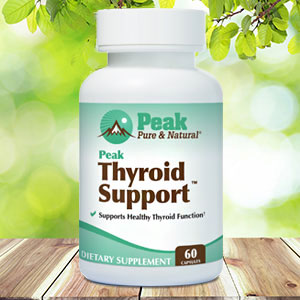Get Easy Health Digest™ in your inbox and don’t miss a thing when you subscribe today. Plus, get the free bonus report, Mother Nature’s Tips, Tricks and Remedies for Cholesterol, Blood Pressure & Blood Sugar as my way of saying welcome to the community!
Do you have estrogen dominance? Take this assessment

Estrogen dominance is at an all-time high. Women are feeling tired, facing period problems, dealing with “menopausal” symptoms earlier and earlier, and are desperate for solutions.
Women have been led to believe that at the earliest symptoms of perimenopause and menopause, they should run out and get hormone replacement.
While estrogen levels decrease during menopause, the truth is, estrogen levels do not fall significantly until after a woman’s last period.
In fact, far more women suffer from the effects of “estrogen dominance” during the transition to menopause in perimenopause. I call it the perimenopause spectrum because symptoms can vary by the person (and even by the day), and estrogen dominance is one of the main causes.
Full disclosure, I have had estrogen dominance in my late 30s. How did I know? After three months of heavy periods, migraines, and breast tenderness accompanied by severe PMS symptoms, I knew that my estrogen levels were higher than progesterone, causing my symptoms. These symptoms are always obvious signs for me to focus on supporting my liver and gut function (I’ll share more on that below).
Are you there too? Have you looked at yourself recently and wondered, “Where did I go? What happened to my energy, ability to sleep, predictable mood and period, etc.?”
If that describes where you are, you are not alone. Women over 35 are dealing with an epidemic of estrogen dominance, and it’s taking its toll on your productivity, your energy, your motivation and your body.
This is something you do not want to ignore.
The heavy bleeding, painful periods, fibroids, fibrocystic breasts, migraines, etc. are your body’s way of sending a signal that something is not right. If you just “push through it” or try to counteract it with more hormones, it’s likely to lead to something way more serious down the line, like breast or uterine cancer.
That’s why it’s so important to pin this down NOW before it gets to that point, and while you can still address it naturally.
What is estrogen dominance?
Put simply, estrogen dominance is a higher concentration of estrogen to progesterone in your body.
Estrogen is a hormone that is stimulating, while progesterone is its calming counterpart. When your body carries excess estrogen, or if you are lacking progesterone, this balance is thrown off and the extra estrogen concentration leads to a whole host of symptoms that leave you exhausted, bloated and miserable.
If you are 35 or older and expect estrogen dominance may be an issue for you, take some time to go through the following list of symptoms and see which you identify with…
- Headaches or migraines (especially around your period)
- Fibrocystic, painful or swollen breasts
- Uterine fibroids
- Endometriosis
- Restlessness, especially in your legs at night
- Miscarriages in the 1st trimester, infertility or subfertility (not being able to sustain a pregnancy)
- Heavy, painful periods
- Bloating or water retention
- Irregular periods or periods becoming shorter
- Hot flashes
- Irritability and mood swings
- Anxiety
- Difficulty falling or staying asleep
- Dry, sagging skin
- Spider or varicose veins and cellulite
- Weight gain around your belly or hips
- PMS that has increased in severity
- Gallbladder problems
- Vaginal dryness
Now that I listed the biggest indicators for estrogen dominance, how did you do?
If you identified with two or more of these symptoms, it is very likely that you are dealing with estrogen dominance.
How can you be sure?
You can test for estrogen dominance on a simple DUTCH test in your own home. There are three different measures that you should check:
- Progesterone to Estradiol (E2) ratio: This is the most common scenario. In this situation, you simply have too much estrogen as compared to progesterone. You can even potentially have low estrogen but still be estrogen dominant, due to progesterone being too low as well.
- Estrone (E1), Estradiol (E2), and Estriol (E3) ratio: These are the three types of estrogen in your body. E1 and E2 are more “aggressive,” while E3 is “protective.” If your levels of E1 and E2 are not adequately balanced out by E3, the effects lead to all of the symptoms I just listed out above.
- Estrogen metabolites: When your body breaks down estrogen, it releases metabolites that should be expelled from your body. However, sometimes the system breaks down and your liver doesn’t do a good enough job of metabolizing the estrogens. Then the liver releases a “dirty” metabolite called 16 hydroxy-estrone. If you find this metabolite in your testing, you will know something has gone wrong in your liver’s detox pathways.
What do you do next?
If you identify with several of the symptoms in the brief assessment above, it’s time to start taking steps to heal your body. I definitely recommend working with a functional doctor to have your hormone levels checked, or you can order your own at-home DUTCH test and have a trusted doctor walk through your results with you.
While blood, saliva, and urine tests can help nail down a diagnosis, you need to listen to your body. If something feels off, it probably is.
There’s no need to have a definitive diagnosis before you begin addressing estrogen dominance naturally.
Even if some of these symptoms have been around for a long time and you are not even sure what is causing them…
Even if you have been told what you’re feeling is “normal for your age” (which it doesn’t have to be)…
Even if these symptoms are just beginning, please don’t ignore them…
Now that you’ve had more clarity that estrogen dominance NEEDS to be an area of focus for your body, it is absolutely worth exploring the biggest root causes that got you here:
- Toxic exposure and a sluggish liver
- Gut issues
- Chronic stress
(Click here for a full explanation of root causes and ways to address them specifically.)
It’s by identifying what’s contributing to your individual case of estrogen dominance that you’ll be able to find healing.
If you’ve seen yourself in the list of symptoms in this post, it’s time to start healing your body from the inside out. It’s time to get your energy back. It’s time to start sleeping better, having less painful periods, feeling better, and getting back to yourself again.
This transformation is possible. Check out this post where I break down what causes your estrogen dominance in the first place and practical steps you can take immediately to get your body back into balance.
Ready to take charge of your own health? Grab this free guide to get you started!













